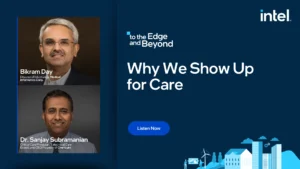Do you see pediatric patients, or do children often accompany adults to visits at your practice or medical office? Then you very likely will encounter a serious pediatric illness or injury requiring a medical emergency response.
Managing a pediatric medical emergency is not the same as treating an adult—types of emergencies and responses can vary in specific ways with younger patients. Physician practices must know the differences and be prepared.
Differences between Pediatric, Adult Emergencies
While children experience many of the same common medical emergencies as adults, there are critical differences including higher rates of shock and dehydration, respiratory distress, seizures, infection, and serious trauma among younger patients. One reason: some parents choose to bring a child with a developing health issue to their family doctor rather than the emergency room.
Basic Requirements: A Plan and Child-Specific Supplies
Medical response to children largely follows the protocols—and uses much the same equipment—as for adults. Here are the basic requirements recommended by the American Academy of Pediatrics.
Primarily because they are smaller than adults, children can need medical responses using specialized supplies and administration.
- For airway and resuscitation
- Pediatric-sized IV gauges
- Separate infant and pediatric bag-valve-masks and face masks. While a manually triggered oxygen resuscitator is a positive pressure option for administration to adults, it can deliver an overwhelming tidal volume to pediatric patients and smaller adults. Use a portable cylinder with a child-sized oxygen bag-valve-mask instead.
- For allergic reactions: Pediatric-dose epinephrine auto injector. (If a pedi auto-injector isn’t available, use an adult auto-injector as last resort.)
- For medication dosing, use the Broselow tape as a reference. This worldwide-accepted medical aide was developed by noted pediatric emergency care physician Dr. James Broselow, a member of the Banyan Medical Advisory Board.
Developing a Preparedness Plan
In addition to appropriate supplies, make sure you have an appropriate plan of action. The first step is to perform a self-assessment of readiness to respond to the most common medical emergencies. The resulting plans should include procurement and organization of equipment and medications to maintain a child until the arrival of emergency services. The plan also should include a maintenance and replenishment process for the supplies.
Incorporate the STAT KIT® Pedi
Banyan offers a comprehensive way to equip a practice for a pediatric medical emergency. We have collaborated with Dr. Broselow to develop the STAT KIT® Pedi. The kit is organized into three levels, with specific attention to efficient organization of the equipment and medications needed for a pediatric emergency. See a video tour here.
OnTraq Keeps Your Kit Current
The STAT KIT® Pedi includes the OnTraq Medications and Supplies Replenishmentprogram. This free service tracks the expiration dates of emergency medications and supplies in your emergency medical kit or crash cart and prompts replacement shipments prior to their expiration.
About Banyan
Since 1971, Banyan has provided STAT KITs that are trusted by physicians in a range of specialties. We are registered with the FDA, DEA and have Verified-Accredited Wholesale Distribution accreditation from the National Boards of Pharmacy. Consult with a Banyan readiness advisor today by calling 888-782-8548 or emailing us.
Read more at statkit.com








